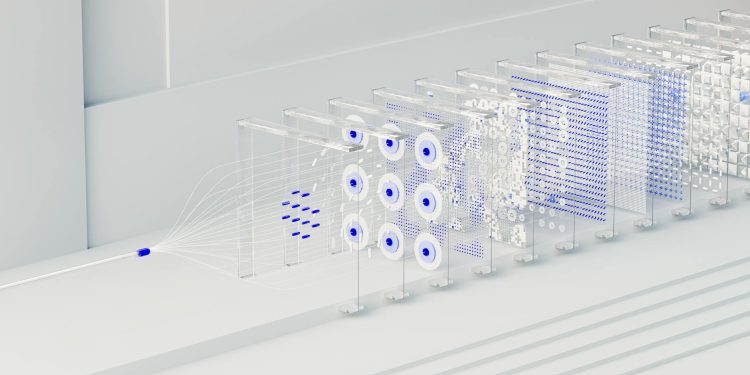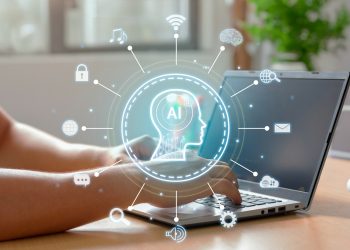Getting to Know AI Inside Out
Jumping into the wild world of Artificial Intelligence (AI) can totally change how businesses operate and tech evolves. Getting a grip on what makes AI tick is key to squeezing out its full potential.
Why Artificial Intelligence Matters
AI is the Superman of tech nowadays, shaking up different industries with its snazzy skills. Whether it's automating the boring stuff or making complicated choices, AI has turned traditional business methods on their head. Thanks to its knack for crunching colossal data amounts and spotting trends, it boosts efficiency and hits the accuracy bullseye.
| Industry | AI Application Example |
|---|---|
| Healthcare | AI in Healthcare Diagnostics |
| Finance | AI for Fraud Detection |
| Transportation | AI in Self-Driving Cars |
| Marketing | AI in Marketing Automation |
| Cybersecurity | AI and Cybersecurity |
AI's got more tricks up its sleeve for tailoring user experiences with AI-powered virtual assistants. Plus, it’s making city life not only cooler but also safer and more sorted with AI and smart cities.
Peeking into Neural Networks
Neural networks are like the buzzing heart of AI, designed to function like the brain - spotting patterns, decoding data, and learning from it. This geeky web of tangled connections, nicknamed 'neurons', helps crunch stuff together and make sense of the jigsaw puzzles of data out there.
They're a must-have for lots of AI stuff, like:
- Pattern Spotting: A biggie for nailing tasks like spotting faces in pictures or picking up on speech nuances.
- Messing with Languages (NLP): Crucial for creating things like chatbots and digital assistants. Find more about this in natural language processing ai.
- Predicting the Future: Helps predict market trends and customer antics, which sharpens up planning strategies. Dive into its uses at ai for predictive analytics.
Neural networks flex their muscles in places as diverse as AI for drug discovery, where they help unearth new meds or revamp old ones, and in AI for predictive maintenance, supercharging industrial productivity and keeping equipment ticking like a clock.
Getting the hang of how neural networks work opens the door to how AI pulls its strings. With these nuggets of wisdom, you can ride the AI wave and fit it to your business needs or tech explorations. For a deeper dive into AI's jaw-dropping skills, check out artificial intelligence applications.
Basics of Neural Networks
What are Neural Networks?
Neural networks form the backbone of artificial intelligence, acting a bit like a digital brain. These fascinating algorithms are built to pick up patterns, much like our noggins do. Picture layers of interconnected “neurons” processing info and spitting out responses. You can use these for tons of stuff, like predictive analytics or smoothing out sentences in natural language processing.
Generally, a neural network has three layers:
- Input Layer: Takes in the raw data.
- Hidden Layers: Chews on the data using weighted connections.
- Output Layer: Shares the final answer.
Here's a quick breakdown:
| Layer Type | Function |
|---|---|
| Input Layer | Gobbles up the initial data input |
| Hidden Layers | Works on data through weighted links |
| Output Layer | Gives out the end result |
How Neural Networks Mimic the Human Brain
Neural networks try to ape the brain’s style and functionality. Your brain's a powerhouse with its gazillion neurons linked via synapses. Similar scene here—neural networks have artificial nodes joined by edges acting like synapses.
Some point-by-point similarities:
- Neurons: Both have neurons (or nodes) as their basic workers. They grab inputs, mull them over, then send outputs.
- Connections: Neurons are hooked through weighted connections, which, like synapses, decide how fierce the neuron “shout” travels to the next one.
- Learning: Both systems tweak the connection strengths to learn. Neural networks use backpropagation along with optimization tricks for this.
Take a peek at this comparison:
| Aspect | Human Brain | Neural Network |
|---|---|---|
| Processing Units | Real neurons | Fake neurons (nodes) |
| Connections | Synapses | Weighted edges |
| Learning | Changing synapse strength | Backprop, optimization |
Getting your head around these ideas helps in recognizing how neural networks anchor many AI marvels. Boosting cybersecurity or transforming healthcare diagnostics—neural networks play a central role in modern AI magic.
Dive deeper into their real-world magic in our articles on AI for business automation, predictive maintenance, and video analytics.
Applications of Neural Networks in AI
Neural networks are like the secret sauce of AI, pushing progress across all kinds of fields. Wrapping your head around their uses can seriously boost what they can do for your business.
Pattern Recognition
Pattern recognition is one of neural networks' greatest hits. Acting like a digital brain, they can decode patterns in massive piles of data, which makes them awesome for stuff like image and speech recognition. Think about it: in healthcare, these networks help pinpoint diseases in medical images like it's nobody's business.
| Application | Description |
|---|---|
| Image Recognition | Recognizes objects, people, or scenes in pictures |
| Speech Recognition | Changes spoken words into text |
| Optical Character Reader | Translates various text from images into readable text |
Keen on more details? Dig into our piece on AI in healthcare diagnostics.
Natural Language Processing
With Natural Language Processing (NLP), neural networks help machines 'get' and 'talk back' in human language. This tech is the engine behind machines that actually seem to understand us, like those chatty virtual assistants and chatbots.
| Application | Description |
|---|---|
| Sentiment Analysis | Figures out if a text feels positive or negative |
| Language Translation | Changes text or speech from one lingo to another |
| Text-to-Speech | Turns written words into spoken ones |
To dive deeper into NLP, check out our in-depth article on natural language processing AI.
Predictive Analytics
Predictive analytics is all about looking into the crystal ball with neural networks, using past info to forecast what's coming next. It's a game-changer for companies wanting to catch market vibes, streamline operations, or make savvy choices.
| Application | Description |
|---|---|
| Demand Forecasting | Speaks to upcoming customer cravings |
| Fraud Detection | Creeps out sketchy activities lurking around |
| Maintenance Prediction | Signals when gear's gonna give up the ghost |
For a closer look, jump over to our spiel on AI for predictive analytics.
Neural networks are shaking things up in AI with savvy pattern decoding, chatty language tech, and future-seeing predictive analytics. Knowing how these work can help you fire up technology to amp up your biz and bring home the bacon. For more intriguing reads, peek at AI for fraud detection and AI and data analytics for some brain food.
Building Blocks of Neural Networks
To get a grip on neural networks in AI, you need to get cozy with the basics. We're talking neurons and connections, layers and architectures, and those mysterious activation functions.
Neurons and Connections
Think of neurons as the real MVPs of neural networks. They're designed to play the role of brain neurons. Each neuron takes in info, does some number crunching, and passes a mix to other neurons. In the AI universe, these connections are called synapses. They're super important because the weights on these connections decide how loud or soft that neuron signal will be.
| Component | Function |
|---|---|
| Neurons | Brainy number-crunchers |
| Connections (Synapses) | Pathways between pals |
| Weights | Signal amplifiers or mufflers |
As these networks learn, they tweak these weights to get better at whatever task they're assigned. For more on giving your neural networks that boost, check out our AI automation tools.
Layers and Architectures
Neural networks are like a layer cake of data crunching. Here's a slice of how each layer plays its part:
- Input Layer: Eats up the raw data.
- Hidden Layers: Where the magic happens, processing and abstracting the data. More hidden layers? Deeper magic.
- Output Layer: Spits out the final answer or prediction.
| Layer | Description |
|---|---|
| Input Layer | Gobbles up raw data |
| Hidden Layers | Processes and works over time |
| Output Layer | Hands over the result |
You’ve got options on how to layer these up:
- Feedforward Neural Nets: Just a straight line from start to finish.
- Convolutional Neural Nets (CNNs): Your go-to for images and pattern spotting.
- Recurrent Neural Nets (RNNs): Masters of time, perfect for sequences and series.
Getting your head around these setups is key for projects in things like natural language processing AI and AI for predictive maintenance.
Activation Functions
Activation functions are like the secret sauce—it decides what’s going in and out of a neuron. Adds a bit of curve to what might otherwise be a straight line of numbers, making sure your network picks up on the spicy stuff. Here's the lineup:
- Sigmoid: ( \sigma(x) = \frac{1}{1 + e^{-x}} )
- Tanh: ( \tanh(x) = \frac{e^x - e^{-x}}{e^x + e^{-x}} )
- ReLU (Rectified Linear Unit): ( \text{ReLU}(x) = \max(0, x) )
| Activation Function | Equation | Usage |
|---|---|---|
| Sigmoid | ( \frac{1}{1 + e^{-x}} ) | Yes or no questions |
| Tanh | ( \frac{e^x - e^{-x}}{e^x + e^{-x}} ) | Keeps things balanced |
| ReLU | ( \max(0, x) ) | Speeds things up |
Picking the right activation function is no joke—it can make or break your network, especially when dealing with AI-powered video analytics or AI in robotics.
By mastering these essentials, you're on your way to unleashing neural network magic in fields from AI in self-driving cars to AI in healthcare diagnostics.
Training Neural Networks
Getting neural networks shipshape is a big deal in making artificial intelligence do its magic. And how do you whip these networks into shape, you ask? You've got three main ways: supervised learning, unsupervised learning, and reinforcement learning.
Supervised Learning
Supervised learning is like guided learning from a teacher who knows all the answers. The network picks up on patterns from labeled data where it gets an input with the correct answer, kind of like a cheat sheet. This method is spot-on for things like spotting fraud or matching images with the right tags.
What's crucial here is the training dataset. The better your dataset—think clear labeling and variety—the better your network will perform out there in the wild with new data. Keep an eye on its progress with a validation set. This way, you know it’s not getting too cozy with the training data and actually learning something.
| Task | Example |
|---|---|
| Image Classification | Sorting pics as cats, dogs, etc. |
| Spam Detection | Figuring out which emails are junk |
| Predictive Maintenance | Predicting when machines need a break |
Check out deeper dives in our article on ai and data analytics.
Unsupervised Learning
In unsupervised learning, the network is flying solo—no labeled data to show the way. It’s off on a treasure hunt, mining the input data for patterns and hidden gems. It's great for grouping things, finding connections, and sniffing out oddities.
Since the network is on its own, unsupervised learning means more work but also more discoveries that might leave you surprised. It’s all about opening the door to insights you didn’t even know you needed.
| Task | Example |
|---|---|
| Clustering | Bunching customers by shopping habits |
| Anomaly Detection | Sussing out fishy transactions in banking |
| Dimensionality Reduction | Cutting down the number of features in a dataset |
Need more scoop? Head over to our article on ai for predictive analytics.
Reinforcement Learning
And then there’s reinforcement learning, where it’s all about trial-and-error. The network dives head-first into its environment, picking up tips through a rewards and penalties game. This is your go-to for tasks where decisions roll out one after another, like in robots or gaming.
Here, the aim's to scoop up the most rewards possible over the long haul. It’s like training a pet with treats. Sure, it demands you plan out a solid reward system and could be heavy on the hardware, but it’s awesome for crafting systems that need to think and react on the spot.
| Task | Example |
|---|---|
| Autonomous Driving | Steering a car through chaos |
| Game Playing | Mastering moves in chess or Go |
| Robotics | Directing robotic arms for building stuff |
Curious about AI's role in steering the wheel? Dive into our article on ai in self-driving cars.
When you get neural networks trained up with these different methods, you’re boosting what AI can bring to the table. Each method's got its perks, tailored (whoops, did I say that?) for different tasks, nudging the whole field forward. Discover how AI keeps morphing over at our article on ai technology advancements.
Challenges and Future of Neural Networks
Overfitting and Underfitting
Neural networks often juggle the double trouble of overfitting and underfitting.
-
Overfitting is what happens when your model gets a little too cozy with the training data. It learns the details like a gossipy neighbor, but this chattiness spells doom when faced with new data. The model performs great on the known data but flunks the test with fresh info because it's way too focused on the little things.
-
Underfitting is the opposite. Imagine trying to teach a dog tricks but only showing it once—for sure, it's gonna struggle. Here, the model doesn’t learn enough to capture the true patterns, leading to a dismal performance on both old and new data.
Here's a handy table for quick reference:
| Issue | Signs | Root Cause |
|---|---|---|
| Overfitting | Sky-high accuracy on training, low on testing | Model complexity overload, too focused changes |
| Underfitting | Low performance all around | Model is too basic, lacking training |
Getting these things right is crucial for creating AI that doesn’t flop at the finish line.
Interpretability and Transparency
Two big lumps in the neural network gravy are interpretability and transparency. As these networks grow in sophistication, they tend to operate like mysterious machines, making it tough for you to trace their decision-making steps.
- Interpretability: This is all about breaking down how a neural network lands on a decision.
- Transparency: This is about shedding light on the way a neural network's internal gears and levers work.
These considerations are super important, especially when AI steps into delicate areas like AI in healthcare diagnostics or AI for fraud detection.
Advancements and Trends in Neural Networks
Neural networks are like the chameleons of tech, constantly morphing with the latest trends and tweaks:
-
Quantum AI: Merging quantum wizards with AI could crack problems quicker than vanilla methods. Peek into quantum computing and ai for the splashy details.
-
Edge Computing and AI: This is about moving the action closer to where the data is born, making everything speedier and letting you do stuff right when it's needed. Dive into the world of edge computing and ai.
-
AI and Smart Cities: Think AI-powered urban wizardry that'll help cities hit that sweet spot of efficiency and sustainability. Check out AI and smart cities for the scoop.
-
AI for Predictive Maintenance: It's like seeing into the future—preemptively spotting equipment that’s about to throw a tantrum so you can dodge a crisis. See how AI for predictive maintenance is cutting downtime and saving bucks.
Keeping tabs on these trends means you're in the loop and ready to ride the neural network wave to success, whether in business or tech.











